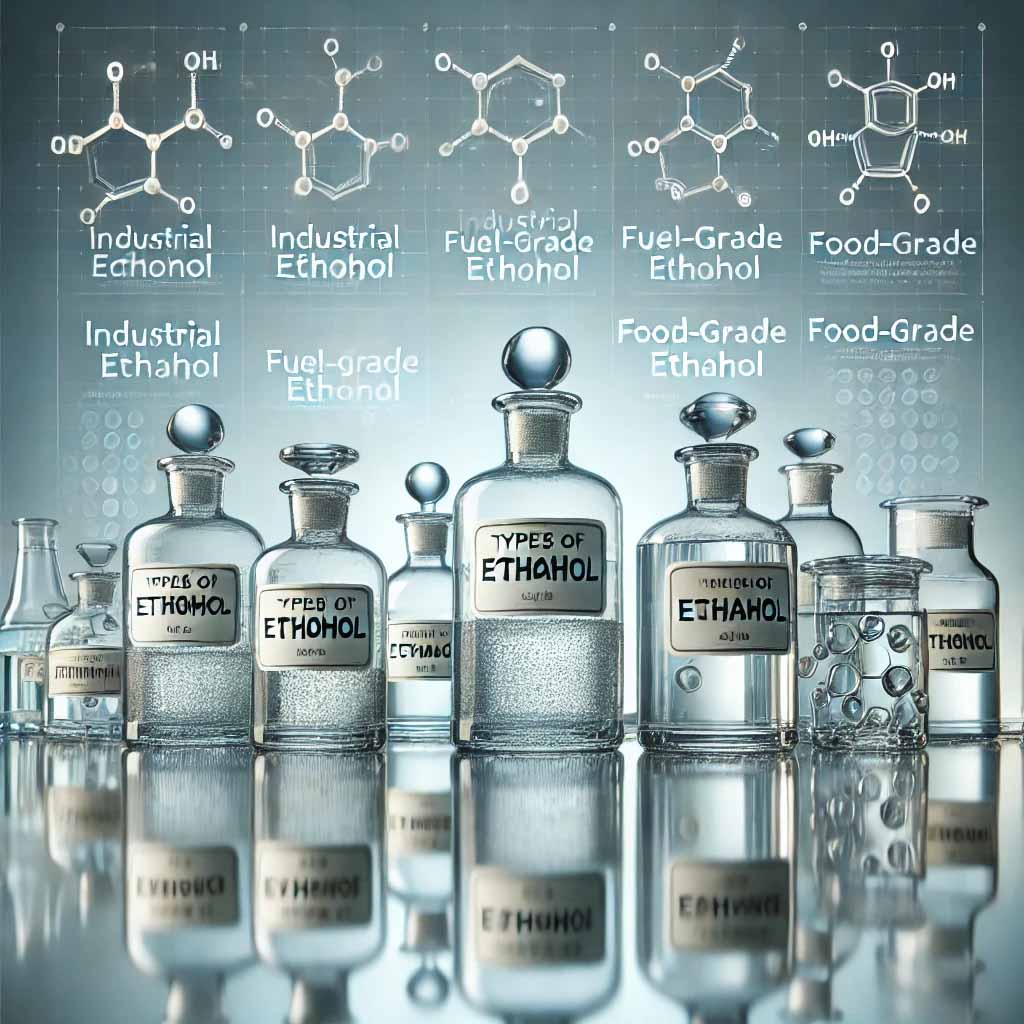When it comes to ethanol, not all forms are created equal. The Types of Ethanol vary widely in their composition and use, making it essential to understand the differences before choosing the right type for a specific application. Ethanol, a versatile alcohol compound, is used across numerous industries, from pharmaceuticals to food processing, and even fuel production. Whether you’re working in a lab, manufacturing, or making consumer products, understanding the distinct types of ethanol ensures safety, effectiveness, and compliance with regulations. This article explores the various types of ethanol and their unique characteristics.
Click to use Silverigroup personal shopper services
What Is Ethanol and Why Are There Different Types?
Differences Between Food-Grade and Industrial-Grade Ethanol
Ethanol is a versatile alcohol compound used across various industries, but there are distinct differences between food-grade ethanol and industrial-grade ethanol. These differences are primarily based on their intended use, purity, and safety standards, which affect how each type is processed and handled.
Purity Levels
Food-grade ethanol is highly refined and must meet strict purity standards to ensure it is safe for human consumption. It typically has a purity level of 95% or higher and undergoes rigorous testing to remove harmful contaminants. On the other hand, industrial-grade ethanol can contain impurities and may be less pure, with typical purity levels ranging from 95% to 99%, depending on its intended application. While it is suitable for non-consumable uses, it does not meet the safety standards required for food or beverage consumption.
Intended Use
Food-grade ethanol is used in the food and beverage industry for applications like flavor extraction, alcohol production, and as a carrier for food additives and preservatives. Its primary purpose is to be safe for consumption and to support food processing without introducing harmful substances. In contrast, industrial-grade ethanol is primarily used in manufacturing, as a solvent in cleaning products, paints, coatings, and cosmetics. It is not intended for human consumption and is used in applications that require less stringent safety controls.
Additives and Denaturants
One of the most significant differences between food-grade and industrial-grade ethanol is the presence of additives or denaturants. Food-grade ethanol is free from additives, ensuring it is pure and safe for food use. Industrial-grade ethanol, however, may contain denaturants, chemicals deliberately added to make it undrinkable. These denaturants are included to avoid alcohol taxes or restrictions and allow the ethanol to be used for industrial purposes without the risk of consumption.
Regulation and Safety Standards
Food-grade ethanol is subject to stringent regulations set by agencies like the FDA and TTB (Alcohol and Tobacco Tax and Trade Bureau). These regulations ensure that the ethanol is safe for consumption and free from contaminants. In comparison, industrial-grade ethanol, while still regulated, follows less restrictive guidelines. Its primary concern is ensuring safety during manufacturing or chemical processes rather than consumption.
Safety Considerations for Different Types of Ethanol
Ethanol, despite its widespread use, poses several safety risks depending on its type and intended application. Each grade of ethanol, whether food-grade, industrial-grade, or denatured, requires specific safety precautions to mitigate health and environmental hazards.
Food-Grade Ethanol: While food-grade ethanol is safe for human consumption, it still carries risks if consumed in large quantities. It should be handled with care to avoid spills, which can cause skin irritation or respiratory issues. Proper storage is necessary to avoid exposure to heat or open flames, as ethanol is highly flammable.
Industrial-Grade Ethanol: This type of ethanol is not meant for consumption and often contains impurities or additives. It is highly flammable, posing risks of fire or explosion. When working with industrial-grade ethanol, adequate ventilation and protective gear such as gloves and goggles are essential to prevent exposure to vapors and skin contact. Proper labeling and storage protocols should be followed to minimize risk.
Conclusion
The Types of Ethanol vary significantly in their purity, uses, and safety standards. Food-grade ethanol is suitable for human consumption and is widely used in the food and beverage industry, while industrial-grade and denatured ethanol are more commonly used in manufacturing and chemical processes. Pharmaceutical-grade ethanol is essential for the medical and pharmaceutical sectors, ensuring high purity and safety. Understanding the distinctions between these types is crucial for choosing the right ethanol for specific applications, ensuring both effectiveness and safety in industrial and consumer use. Proper handling and adherence to safety protocols are essential for all types of ethanol.

